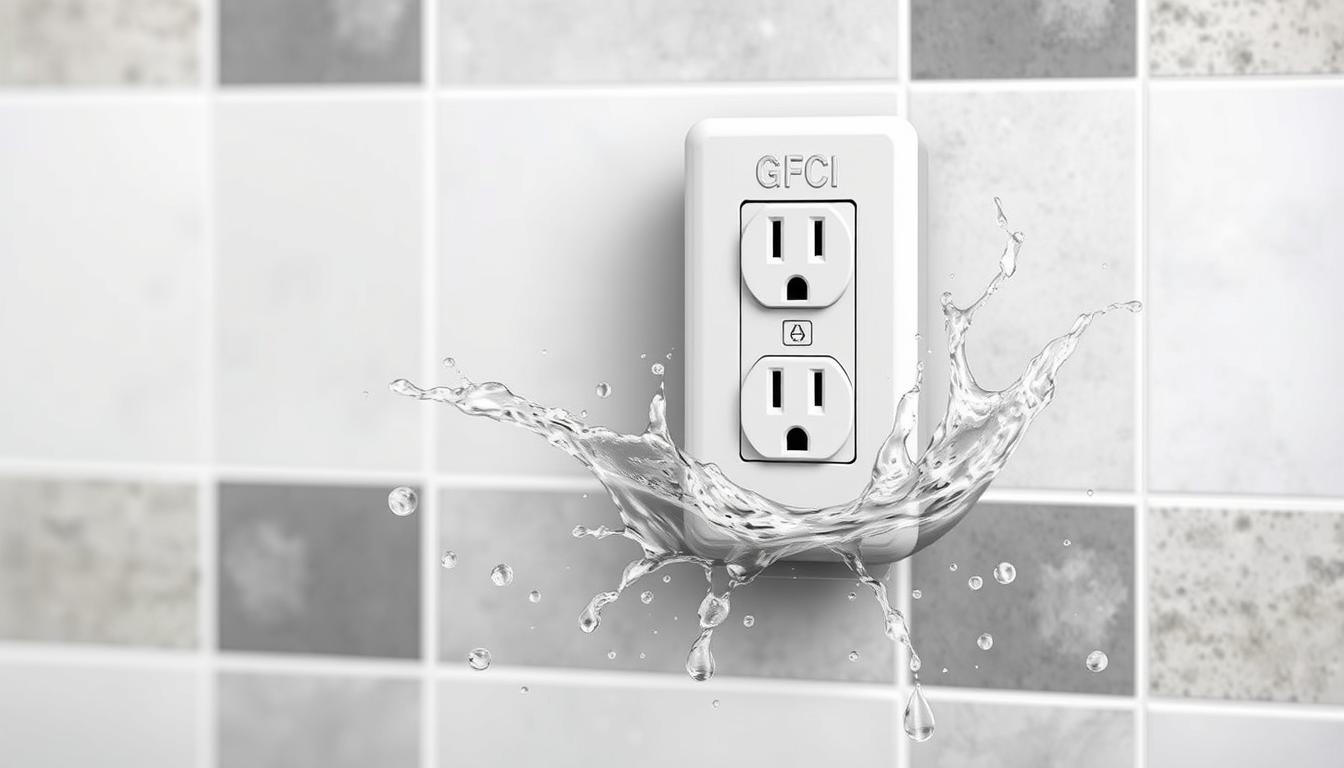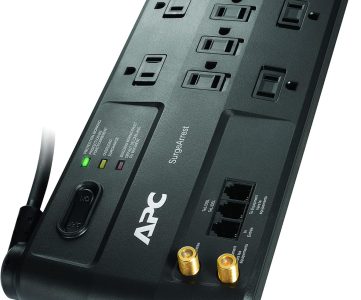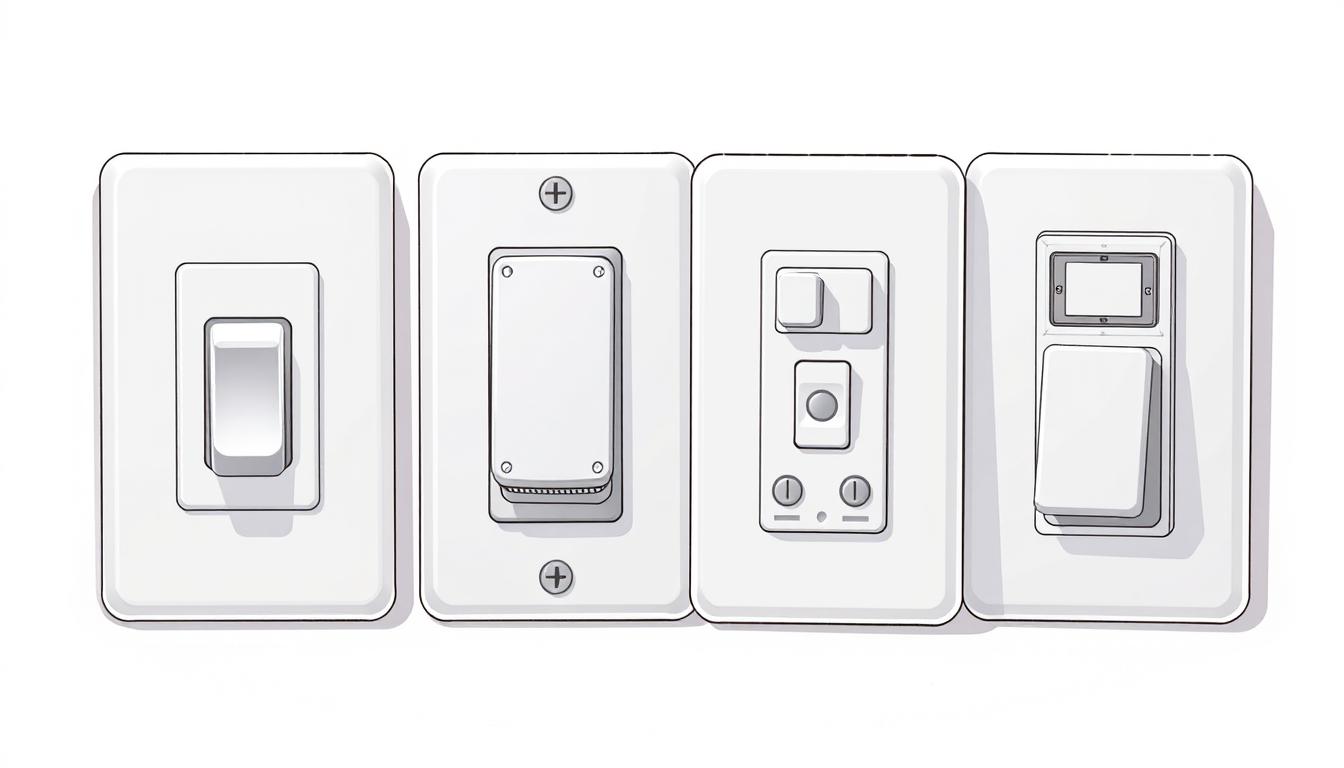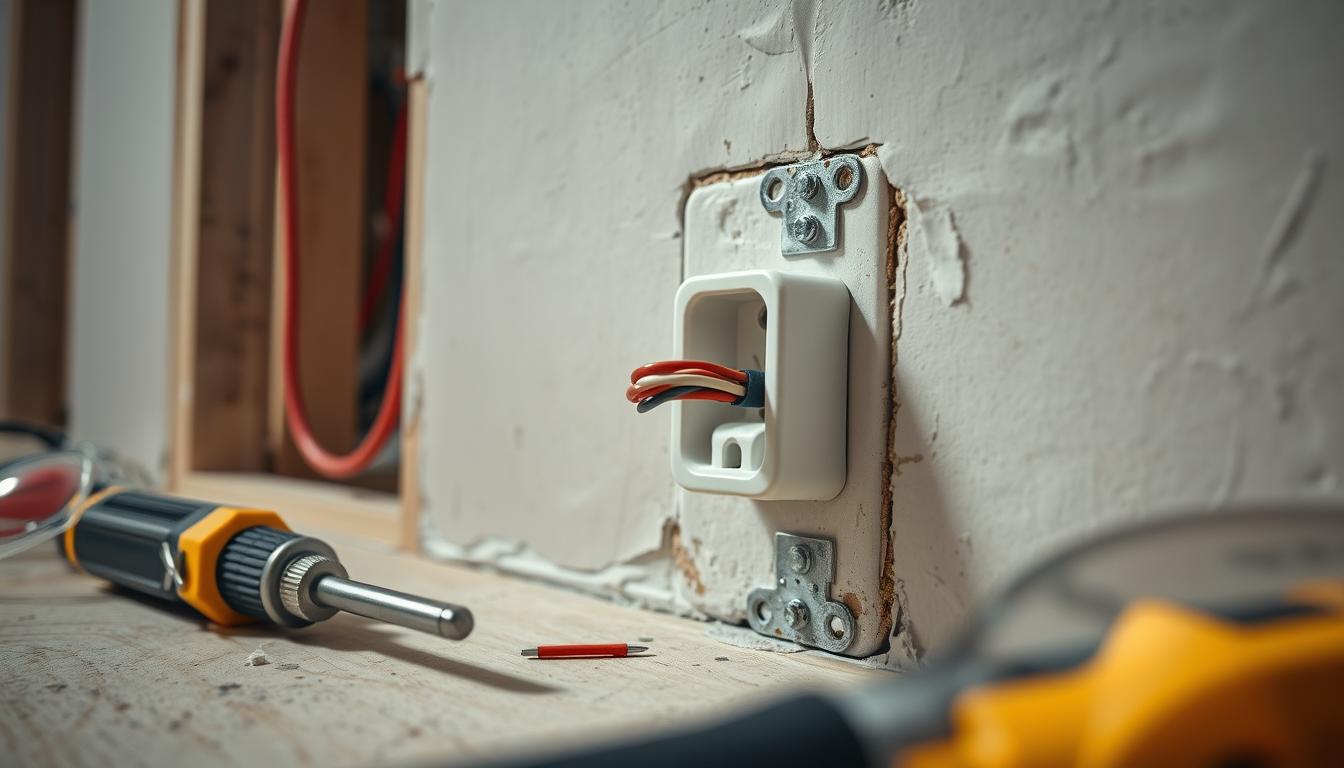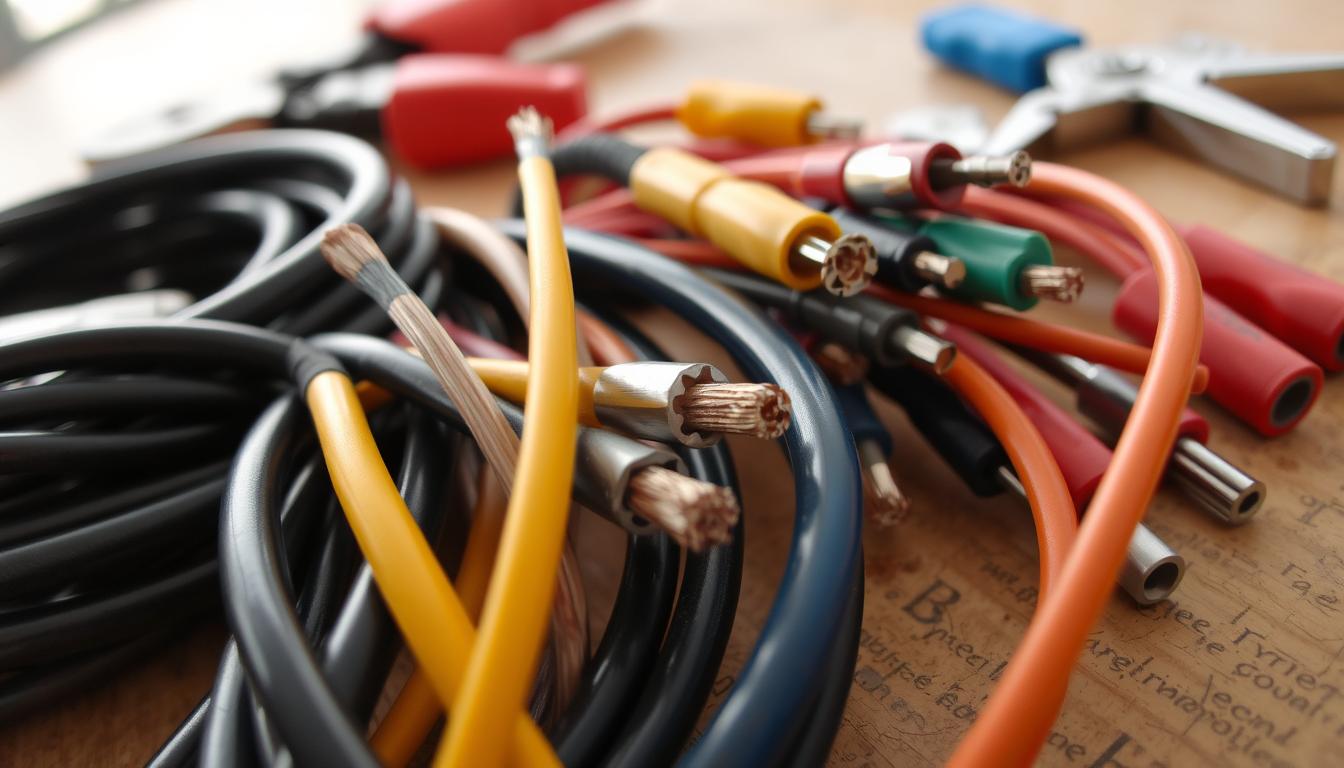Ground fault protection is key in wet areas like bathrooms and kitchens. It ensures electrical safety. Installing GFCI devices can prevent electrical shocks and keep your family safe. This guide will help you understand the importance and how to install GFCI devices.
Knowing about electrical safety and ground fault protection is vital. It helps protect your home and family. We’ll cover the basics of GFCI installation. This includes the types of devices and where they’re needed by law.
Key Takeaways
- Ground fault protection is essential in wet areas to prevent electrical shocks
- GFCI devices can help protect your loved ones from harm
- Electrical safety is crucial in bathrooms and kitchens
- GFCI installation can help prevent electrical fires
- Understanding ground fault protection can help you take necessary steps to protect your home and family
- GFCI devices are required by law in certain areas
Understanding GFCI Protection and Its Importance
GFCI protection is key for home safety, mainly in places like bathrooms and kitchens. A Ground Fault Circuit Interrupter (GFCI) stops electrical shock. It does this by cutting off the circuit if it finds an unintended path to ground.
In the U.S., GFCI devices are used to prevent electrical accidents. They’re vital in places with water, like bathrooms and kitchens. Installing GFCI outlets in these spots makes homes safer and reduces the risk of electrical shock.
What is a Ground Fault Circuit Interrupter?
A GFCI device is a simple yet effective way to guard against electrical shock. It’s put in the electrical circuit and watches the current. If it spots a ground fault, it trips and stops the circuit, preventing shock.
How GFCI Devices Save Lives
GFCI devices have been shown to save lives by stopping electrical accidents. The National Electrical Manufacturers Association (NEMA) says GFCI devices cut the risk of electrical shock by up to 70%. This is crucial in homes with young kids or the elderly, who are more at risk.
Common Applications in Home Safety
GFCI devices are used in many places for safety:
- Bathroom electrical outlets
- Kitchen outlets
- Outdoor outlets
- Pool and spa areas
By putting GFCI devices in these spots, homeowners make their homes safer. They lower the chance of electrical accidents.
| Location | GFCI Requirement |
|---|---|
| Bathrooms | Required for all outlets |
| Kitchens | Required for all outlets near sinks |
| Outdoor areas | Required for all outlets |
Areas Requiring GFCI Protection by Law
GFCI protection is key in places with water, as it stops electrical shock. Code requirements say GFCI outlets must be in bathrooms, kitchens, and outdoor spots near water. This is because water and electricity are dangerous together. GFCI outlets protect by cutting off the electrical flow if there’s a ground fault.
Some places need GFCI protection by law, including:
- Bathrooms: GFCI outlets must be within 3 feet of any sink, and on countertops with sinks.
- Kitchens: GFCI outlets are needed on countertops with sinks, and on islands and peninsulas with sinks.
- Outdoor areas: GFCI outlets are required in outdoor spots with water, like near pools, hot tubs, and outdoor sinks.
It’s important to remember that code requirements can change based on where you are. So, always check with a licensed electrician. They can make sure you meet local code requirements and keep your place safe from water damage.
Putting in GFCI outlets in wet areas helps prevent shock and keeps your home safe. Always stick to local code requirements and get a licensed electrician to install them right. This way, you’ll have the best water protection for your home.
| Area | GFCI Requirement |
|---|---|
| Bathrooms | GFCI outlets within 3 feet of any sink |
| Kitchens | GFCI outlets on countertops where a sink is installed |
| Outdoor areas | GFCI outlets in areas where water is present |
Types of GFCI Devices Available
Choosing the right Ground Fault Circuit Interrupter (GFCI) device is key to protecting your home from electrical shock. GFCI devices are made to keep you safe where water and electricity might mix, like in bathrooms, kitchens, and outdoors. For outdoor power outlets, it’s vital to have GFCI protection to avoid accidents.
There are many types of GFCI devices, each with its own benefits. Here are a few:
- GFCI Outlets: These are the most common and replace standard outlets.
- GFCI Circuit Breakers: Installed in the main electrical panel, they protect entire circuits.
- Portable GFCI Units: These can be plugged into any outlet for GFCI protection.
When picking a GFCI device, think about where you’ll use it and how much electrical safety you need. For example, if you’ll be using outdoor power tools, you might need a more protective GFCI device.
By picking the right GFCI device, you can make sure your electrical system is safe and reliable. Whether you need to protect your outdoor power outlets or ensure electrical safety in your bathroom or kitchen, there’s a GFCI device for you.
| GFCI Device Type | Features | Benefits |
|---|---|---|
| GFCI Outlets | Easy to install, affordable | Provides GFCI protection for individual outlets |
| GFCI Circuit Breakers | Provides GFCI protection for entire circuits | Offers a high level of electrical safety |
| Portable GFCI Units | Portable, easy to use | Provides GFCI protection for outdoor power tools and equipment |
Essential Tools and Materials for Installation
Installing ground fault protection devices requires the right tools and materials. For bathroom electrical work, you need tools that fit the task. Wire strippers, pliers, and screwdrivers are key for a good job.
Here’s a list of must-have materials:
- Ground fault circuit interrupter (GFCI) outlets
- GFCI circuit breakers
- Wire nuts and connectors
- Electrical tape
Always follow safety rules to avoid accidents. Turn off power before starting and wear gloves and safety glasses. With the right tools and safety, your installation will be safe and successful.
Check local rules and codes for bathroom electrical and ground fault protection. This ensures your work meets standards and is safe.
Step-by-Step GFCI Installation Process
Installing GFCI outlets is all about safety, whether it’s in kitchens or outdoors. The process has several key steps to make sure it’s done right and safely.
First, turn off the power to the circuit. This is a must to avoid accidents or electrical shocks. Then, remove the old outlet carefully to not damage the wiring or other parts.
Safety Preparations
Before starting, get ready with safety gear like gloves and safety glasses. Make sure your tools are insulated and in good shape to avoid accidents.
Wiring Configuration
Setting up the wiring is very important. You need to connect the wires to the right spots on the GFCI outlet. Always follow the manufacturer’s guide and make sure all connections are tight and meet local codes.
Once the wiring is done, test the GFCI outlet. Press the test button and see if it trips. If it doesn’t, there might be a problem with the installation or the outlet itself.
| Step | Description |
|---|---|
| 1. Safety Preparations | Turn off power supply, wear protective gear |
| 2. Remove Old Outlet | Take care not to damage surrounding wiring or components |
| 3. Wiring Configuration | Connect wires to correct terminals, follow manufacturer’s instructions |
| 4. Testing the Installation | Press test button, check that outlet trips when it should |
By following these steps and being careful, you can install GFCI outlets safely. This is true for both kitchen outlets and outdoor power sources.
Bathroom GFCI Requirements and Installation
Electrical safety in bathrooms is a big deal. The National Electric Code (NEC) has rules for GFCI installation. It’s important to know these rules.
Outlets in bathrooms need special attention. GFCI outlets must be near sinks and water sources. This helps prevent electrical dangers. Also, GFCI circuit breakers can protect whole circuits.
- Outlet placement and spacing
- Circuit sizing and loading
- Grounding and bonding requirements
Following these rules ensures your bathroom is safe. Always check local laws and get a licensed electrician for help.
| Location | GFCI Requirement |
|---|---|
| Sink area | GFCI-protected outlet within 36 inches |
| Shower or bathtub | GFCI protection for entire circuit |
| Outdoor areas | GFCI protection for outlets and circuits |
Kitchen GFCI Protection Guidelines
Kitchen areas need water protection to avoid electrical shocks. GFCI protection is key, around sinks and countertops where water is used. It’s important to follow local regulations for GFCI protection in kitchens.
GFCI outlets must be within a certain distance from sinks and water sources. This prevents electrical shocks and keeps the kitchen safe. Island and peninsula areas also need their own GFCI protection.
Appliance Circuit Protection
Protecting appliance circuits is crucial in kitchens. GFCI outlets should be on dedicated circuits for appliances like refrigerators and dishwashers. This prevents electrical shocks and ensures appliances work safely. Bathroom electrical systems also need water protection measures.
Some key considerations for kitchen GFCI protection include:
- Installing GFCI outlets in areas where water is present
- Ensuring compliance with local electrical codes and regulations
- Regularly testing GFCI outlets to ensure they are functioning properly
By following these guidelines and precautions, you can ensure your kitchen’s electrical systems work safely. This also provides adequate water protection and bathroom electrical safety.
| Location | GFCI Requirement |
|---|---|
| Kitchen counters | GFCI outlets within 6 feet of sink |
| Islands and peninsulas | Separate GFCI protection may be required |
| Appliance circuits | GFCI outlets on dedicated circuits |
Outdoor GFCI Installation Best Practices
Ensuring ground fault protection is key for outdoor power setups. Places like pools, hot tubs, and outdoor kitchens need GFCI to avoid electrical shocks.
For outdoor GFCI outlet installation, pick a spot that’s weather-proof. It should also meet the National Electric Code (NEC) rules. The NEC says GFCI outlets are needed for outdoor plugs that are no more than 6.5 feet off the ground.
- Using weather-resistant GFCI outlets and covers
- Ensuring proper wiring and connections
- Testing the GFCI outlet after installation
By sticking to these guidelines and using ground fault protection devices, you can make your outdoor power setup safe and dependable.
Troubleshooting Common GFCI Issues
Keeping electrical safety in mind is key when dealing with Ground Fault Circuit Interrupter (GFCI) devices. This is very important in places like kitchen outlets. If problems come up, it’s vital to fix them quickly to avoid accidents and keep electrical safety.
A common issue with GFCI devices is the reset button not working right. This might be because of moisture or parts wearing out. To solve this, it’s best to look at the device’s manual or get help from a pro.
Reset Button Problems
- Check for moisture or water damage
- Inspect the device’s components for wear or damage
- Consult the device’s manual or manufacturer’s instructions
Frequent Tripping Causes
GFCI devices often trip for many reasons, like bad appliances or old cords. To fix this, finding the main cause and fixing it is key. This helps prevent it from happening again.
When to Call a Professional
If you’re not sure how to fix a GFCI device, it’s best to call a pro. They can help you fix it right and keep your home safe, mainly in areas with kitchen outlets.
| Issue | Cause | Solution |
|---|---|---|
| Reset button not working | Moisture or worn-out components | Check device’s manual or consult a professional |
| Frequent tripping | Faulty appliances or worn-out cords | Identify root cause and take necessary actions |
Maintenance and Testing Schedule
To keep GFCI devices working well, it’s key to stick to a regular maintenance and testing plan. This plan should match the code requirements of your area. These rules can change based on where you live and the setup of your installation.
A common maintenance plan might include:
- Monthly checks to make sure GFCI devices are working right
- Annual inspections to look for wear or damage
- Replacing devices every 10 years or when the maker says to
Testing and upkeep are vital to keep GFCI devices protecting against water protection and electrical shocks. By following the code requirements and keeping devices in good shape, homeowners can stay safe and avoid dangers.
Keeping records of maintenance and tests is also crucial. It shows you’re following code requirements and helps spot issues early. By focusing on GFCI device upkeep, homeowners can feel secure and shielded from electrical risks.
| Device Type | Maintenance Schedule |
|---|---|
| GFCI Outlets | Monthly testing, annual inspection |
| GFCI Circuit Breakers | Annual inspection, replacement every 10 years |
Local Code Compliance and Inspections
Local code compliance and inspections are key for GFCI installation safety. This is very important for bathroom and outdoor power setups. These areas have a higher risk of electrical shock.
A licensed electrician will help you through the process. They ensure all installations follow local rules and codes. This includes getting the right permits and certifications, like for bathroom electrical work.
Permit Requirements
- Check with your local authorities to determine the specific permit requirements for your area
- Ensure that all permits are obtained before commencing the installation
- Keep records of all permits and certifications for future reference
Professional Certification Needs
It’s crucial to hire a licensed electrician for bathroom and outdoor power jobs. They have the right certifications and experience. This ensures the work is done safely and correctly.
By following these steps, you can be sure your GFCI installation is safe. This is true for both bathroom electrical and outdoor power needs.
Conclusion
Ground fault protection through GFCI devices is key for your home’s electrical safety. This is true for wet areas like bathrooms, kitchens, and outdoor spaces. By installing and keeping these devices in good shape, you protect your family from electrical shocks and dangers.
Getting GFCI technology is a smart move for your home’s safety. Whether you’re updating old outlets or adding GFCI to new builds, it’s a wise choice. This article has given you the tools to install GFCI safely and protect your home.
Electrical safety is always important. By knowing about GFCI needs, you meet legal rules and show you care about your family’s health. Make GFCI protection a regular part of your home care. Enjoy the peace of mind it brings.
